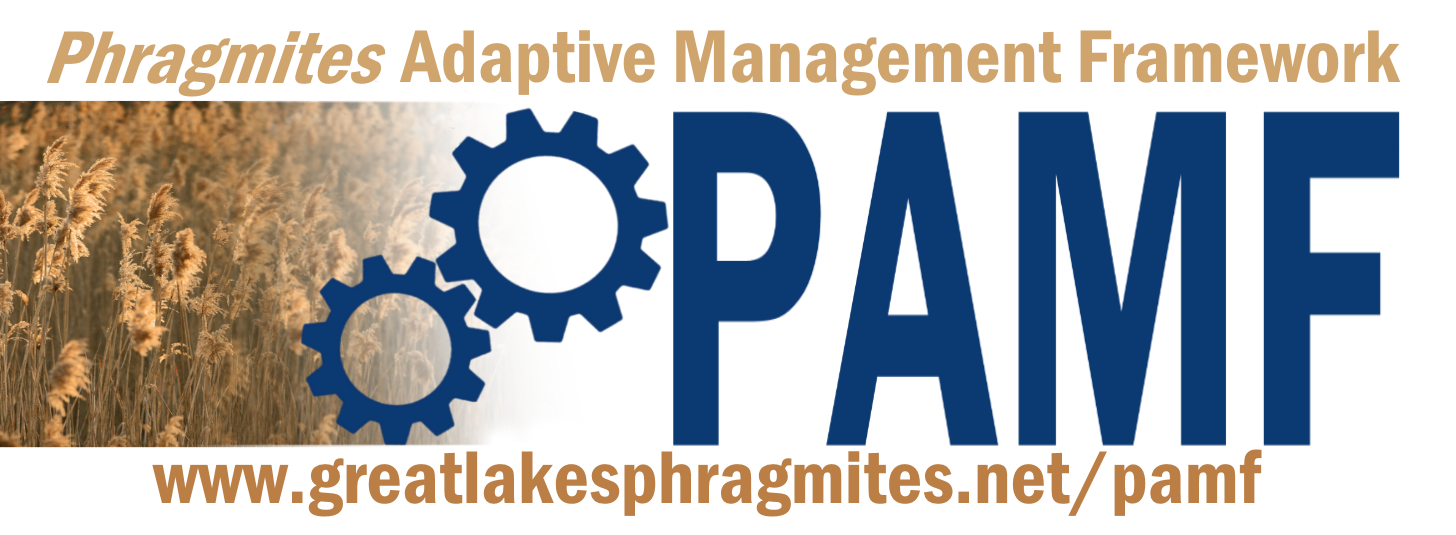Phragmites Adaptive Management Framework

About the Phragmites Adaptive Management Framework (PAMF)
PAMF is the first wide-scale application of adaptive management to address the issue of non-native Phragmites australis. With this approach, PAMF will become a ground-breaking decision-support tool which will facilitate more effective and efficient management of Phragmites across the basin. Millions of dollars have been spent on non-native Phragmites management, but long-term control is difficult and land managers face uncertainty regarding site specific treatment effectiveness. In 2016, a PAMF core team was established which includes staff from the Great Lakes Commission, US Geological Survey, and the University of Georgia. The core team is working closely with a Technical Working Group, which is composed of a team of professionals from across the basin with Phragmites management experience.
PAMF is an adaptive management and collective learning program that anyone managing Phragmites can join. Participants from around the Great Lakes basin submit Phragmites monitoring and management data to bolster the PAMF predictive model, which uses participant data to continually ‘learn’ more about which management techniques are working to reduce Phragmites infestations and which ones are not. In turn, the PAMF model predicts optimal management guidance for each site being managed based on the most up-to-date information collected from all the participants. This process repeats annually, reducing uncertainty with additional data collected. By undergoing this collective learning process, we can determine which management techniques are efficient and effective for controlling Phragmites quicker than if we were working alone. The goal of PAMF is to determine best management practices for Phragmites in the Great Lakes.

Find out more by visiting our website! www.greatlakesphragmites.net/pamf/ or contact us at [email protected].
This material is based upon work supported by the U.S. Geological Survey under Grant/Cooperative Agreement No. G23AC00436. The views and conclusions contained in this document are those of the authors and should not be interpreted as representing the opinions or policies of the U.S. Geological Survey. Mention of trade names or commercial products does not constitute their endorsement by the U.S. Geological Survey.
Project Partners
U.S. Geological Survey
Funding
This program is funded through a cooperative agreement with the USGS-Great Lakes Science Center under the Great Lakes Restoration Initiative.
For More Information visit www.greatlakesphragmites.net/pamf
.
Sign up for our e-newsletter
Get the latest Great Lakes Commission news and events in your inbox!
Sign up for our e-newsletter
Get the latest Great Lakes Commission news and events in your inbox!
